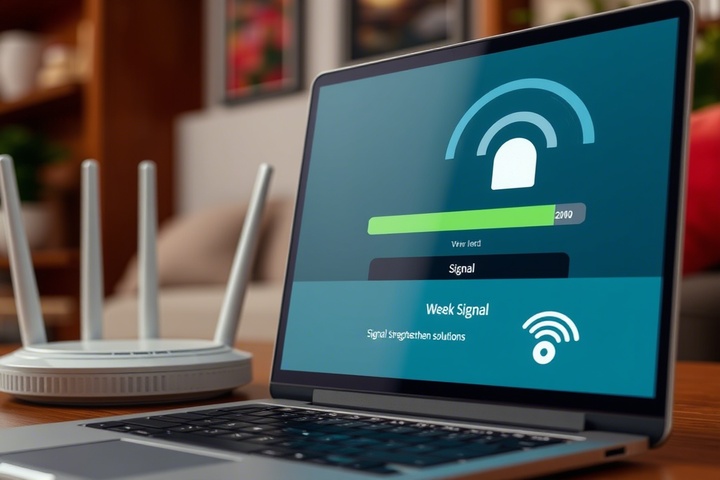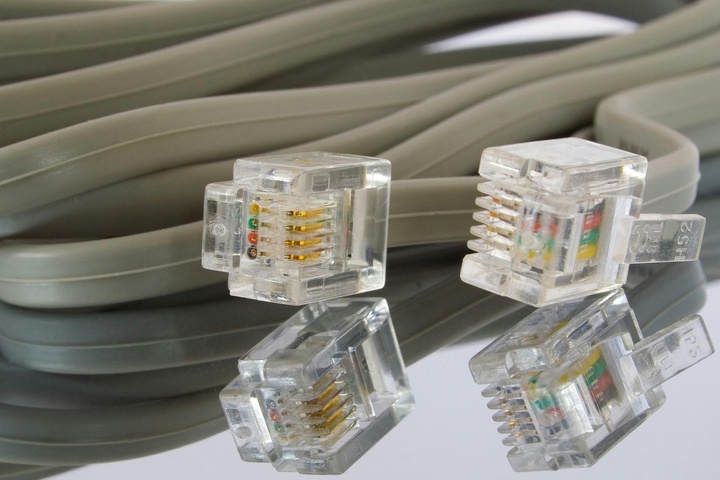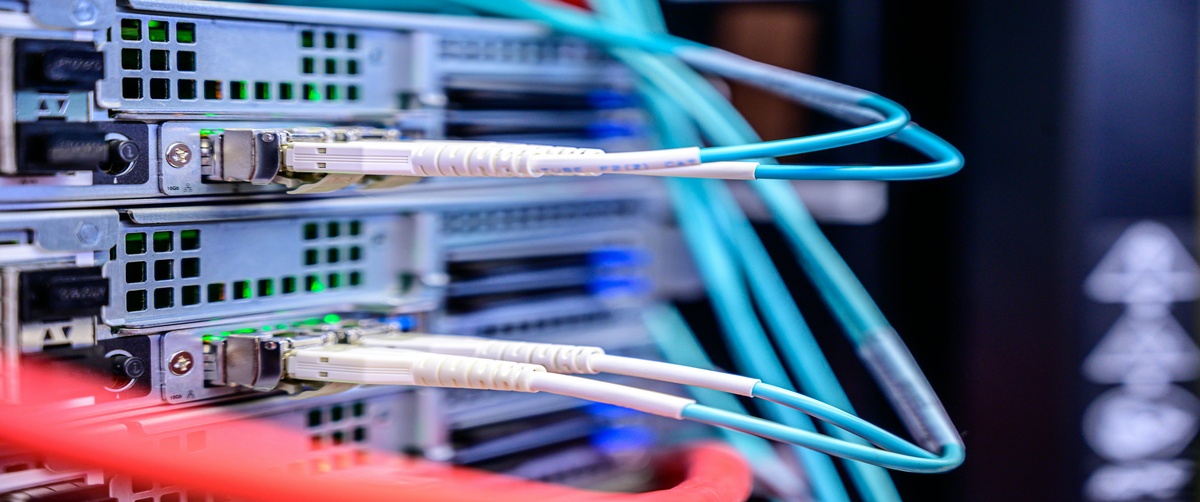A weak wireless signal can cause slow internet speeds, frequent disconnections, and buffering issues while streaming or gaming. Several factors can impact Wi-Fi strength, including poor router placement, interference, and outdated equipment. If you’re experiencing dead zones or a weak signal, you may need to adjust your router settings, optimize placement, or use a signal booster.
This step-by-step guide will help you diagnose and fix a weak wireless signal, improving Wi-Fi strength for a stable and fast internet connection.
What Causes a Weak Wireless Signal?

A weak Wi-Fi signal can result from multiple factors, including:
- Poor router placement – Walls, furniture, and appliances can block signals.
- Interference from other devices – Microwaves, Bluetooth devices, and neighboring Wi-Fi networks can disrupt the signal.
- Outdated hardware – Older routers may not support high-speed connections.
- Too many connected devices – Excessive network usage can slow down speeds.
- Signal range limitations – Large homes or offices may require a Wi-Fi extender or mesh system.
Now, let’s go through step-by-step troubleshooting to fix a weak Wi-Fi signal.

Step 1: Test Your Wi-Fi Signal Strength
Before making changes, check your Wi-Fi strength to identify weak spots.
Method 1: Use Your Device’s Wi-Fi Indicator
- Check the Wi-Fi bars on your laptop, smartphone, or tablet in different locations.
- If the signal drops significantly in certain areas, your router may not be covering the full space.
Method 2: Run a Speed Test
- VisitSpeedtest.net and test your speed near the router.
- Move farther away and test again.
- If speeds drop significantly, your wireless signal is weak.
Method 3: Use a Wi-Fi Analyzer App
- Apps like NetSpot (Windows/Mac) or WiFi Analyzer (Android) can map Wi-Fi dead zones in your home.
If you confirm weak signals in certain areas, proceed to Step 2.
Step 2: Optimize Router Placement
Router placement is crucial for good Wi-Fi strength.
✅ Place the router in a central location – Avoid placing it in a corner or near walls.
✅ Elevate the router – Keep it off the floor, preferably on a shelf or desk.
✅ Minimize obstacles – Avoid placing the router near walls, metal objects, or large furniture.
✅ Keep away from interference – Avoid placing the router near microwaves, Bluetooth devices, or cordless phones.
If relocating the router doesn’t improve the signal, move to Step 3.
Step 3: Change Wi-Fi Channel to Reduce Interference
Other Wi-Fi networks or electronic devices can interfere with your Wi-Fi signal. Changing the Wi-Fi channel can help reduce congestion.
How to Change Wi-Fi Channel on Your Router:
- Log in to your router settings (192.168.1.1 or 192.168.0.1).
- Navigate to Wireless Settings > Channel Selection.
- Change the Wi-Fi channel to:
- 1, 6, or 11 (for 2.4 GHz Wi-Fi).
- Any lower-numbered channel (for 5 GHz Wi-Fi).
If you’re still experiencing weak signals, proceed to Step 4.
Step 4: Switch to 5 GHz for Faster Speeds
Most modern routers offer dual-band Wi-Fi (2.4 GHz & 5 GHz). Switching to 5 GHz can improve speeds and Wi-Fi strength, but has a shorter range.
How to Enable 5 GHz Wi-Fi:
- Open router settings and go to Wireless Settings.
- Enable the 5 GHz band (if not already active).
- Connect devices that support 5 GHz Wi-Fi for faster speeds.
If some devices can’t find the 5 GHz network, they may only support 2.4 GHz Wi-Fi. In that case, consider Step 5.
Step 5: Use a Wi-Fi Extender or Mesh System
If your home or office has Wi-Fi dead zones, a Wi-Fi signal booster may be necessary.
Option 1: Use a Wi-Fi Extender
- A Wi-Fi range extender amplifies the router’s signal, extending coverage to weak areas.
- Place it midway between the router and the dead zone for the best performance.
Option 2: Upgrade to a Mesh Wi-Fi System
- A mesh network (e.g., Google Nest, Eero, Orbi) creates multiple access points for seamless coverage.
- Ideal for large homes, multi-story buildings, or offices.
If boosting the signal with hardware doesn’t help, move to Step 6.
Step 6: Update Router Firmware and Network Drivers
Outdated router firmware and network drivers can weaken Wi-Fi performance.
How to Update Router Firmware:
- Log in to router settings.
- Navigate to Firmware Update or Advanced Settings.
- Download and install any available updates.
- Restart the router after updating.
How to Update Network Drivers (Windows):
- Open Device Manager (Win X > Device Manager).
- Expand Network Adapters.
- Right-click your Wi-Fi adapter and select Update Driver.
- Restart your computer.
For Mac:
- Open System Preferences > Software Update.
- Install any available updates.
- Restart your Mac.
If the signal is still weak, continue to Step 7.
Step 7: Reduce Connected Devices and Bandwidth Usage
Too many devices using the same Wi-Fi network can slow it down.
✅ Disconnect unused devices – Smart TVs, tablets, and IoT devices may be consuming bandwidth.
✅ Limit high-bandwidth activities – Streaming, gaming, and downloads can slow the network.
✅ Enable QoS (Quality of Service) – Prioritize gaming, video calls, or work-related apps in router settings.
If the signal is still weak, consider upgrading your internet plan (Step 8).
Step 8: Upgrade to a Better Router or Faster Internet Plan
If you’ve tried everything and still have weak Wi-Fi, your router or internet plan may not be sufficient.
🔹 Upgrade to a modern router – Look for a Wi-Fi 6 or Wi-Fi 6E router for better range and speed.
🔹 Increase internet speed – If multiple people are streaming or gaming, consider a higher-speed plan.
🔹 Consider fiber-optic internet – If available, fiber internet provides the best performance.
Get Professional IT Support for Wi-Fi and Network Issues

If you’re still struggling with a weak wireless signal, poor Wi-Fi strength, or router placement issues, expert help can optimize your network. TechNow offers IT Support Services in Germany, specializing in Wi-Fi troubleshooting, signal boosting, and network optimization. Contact us today for expert solutions!





